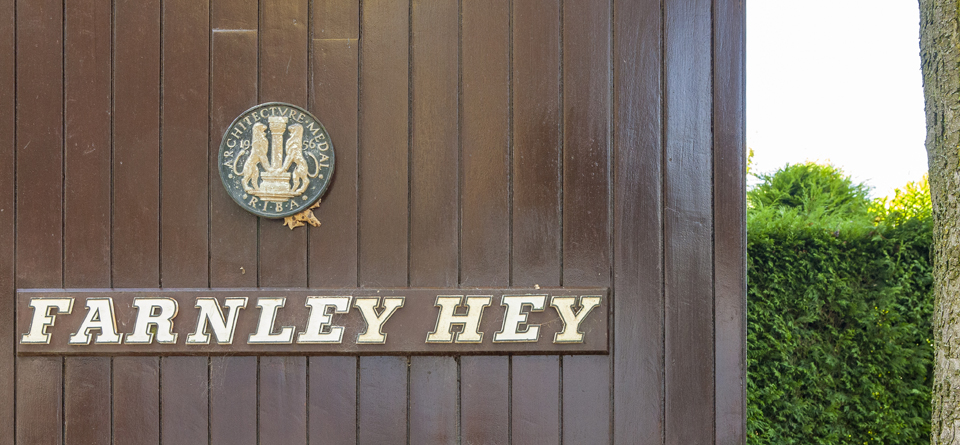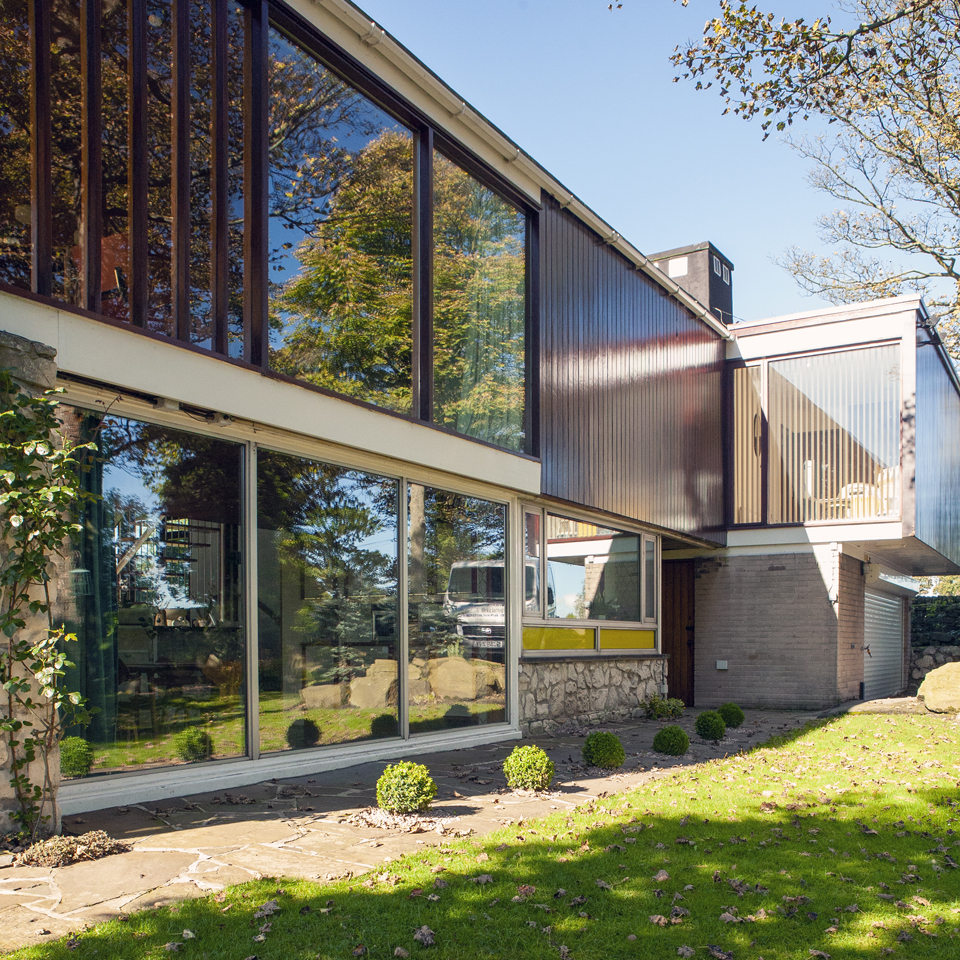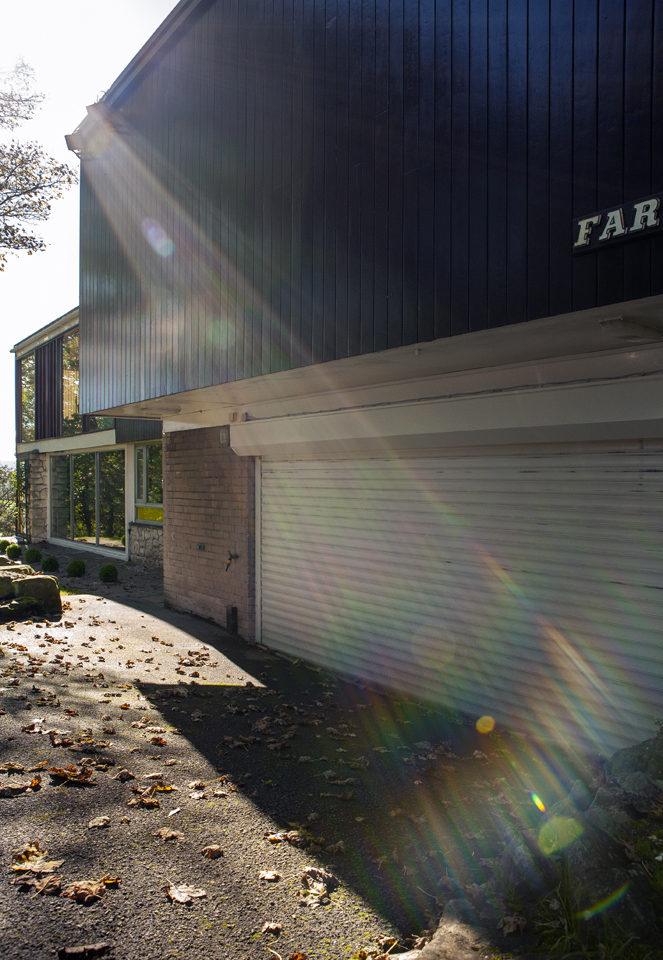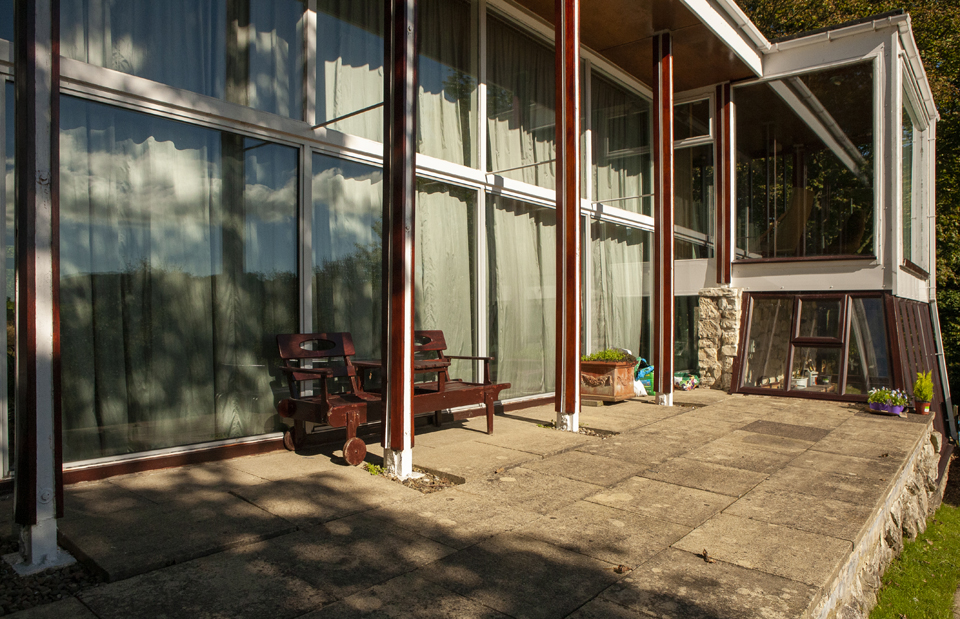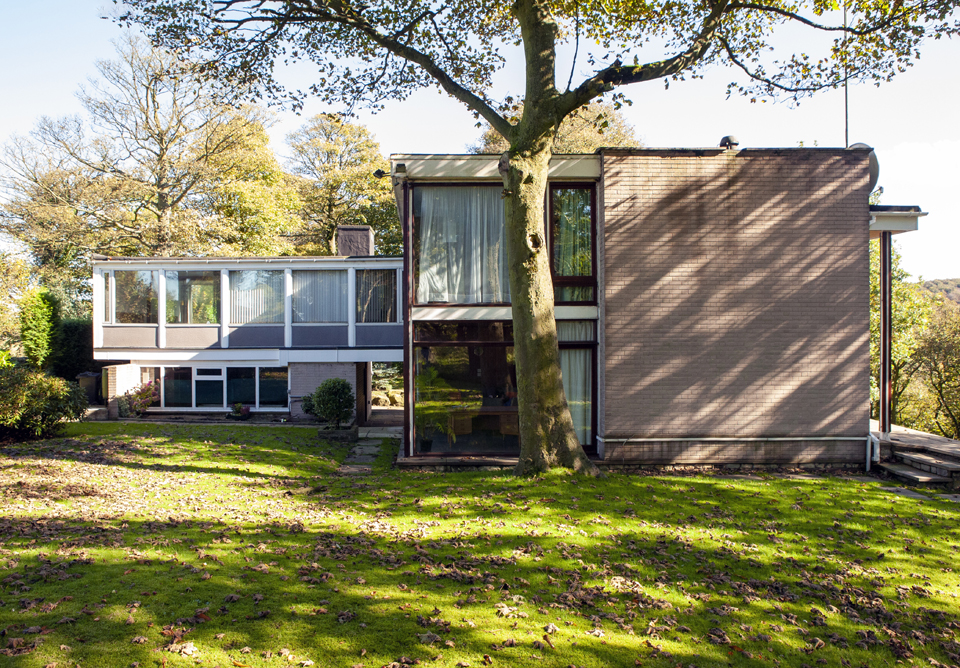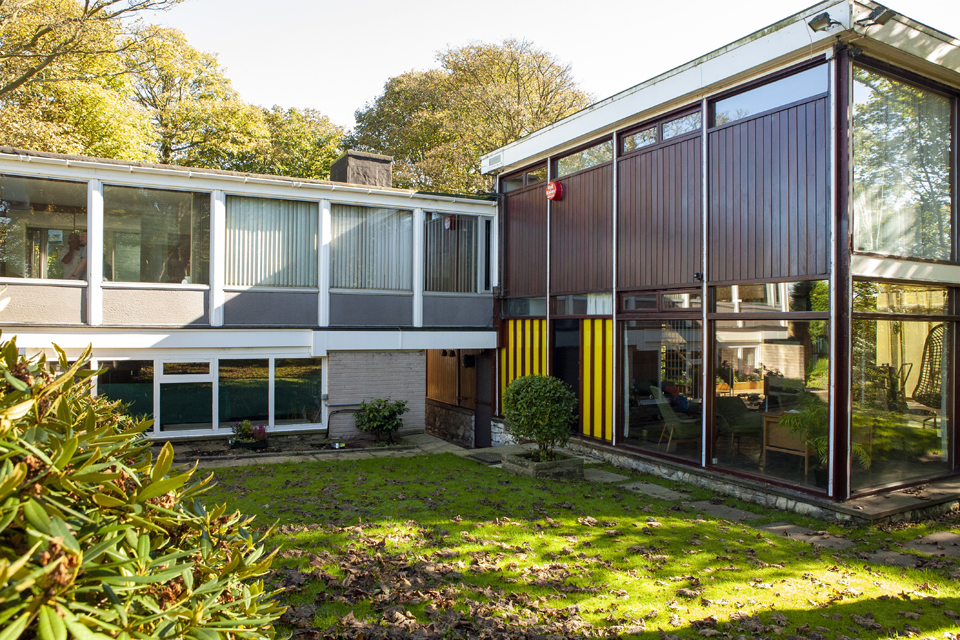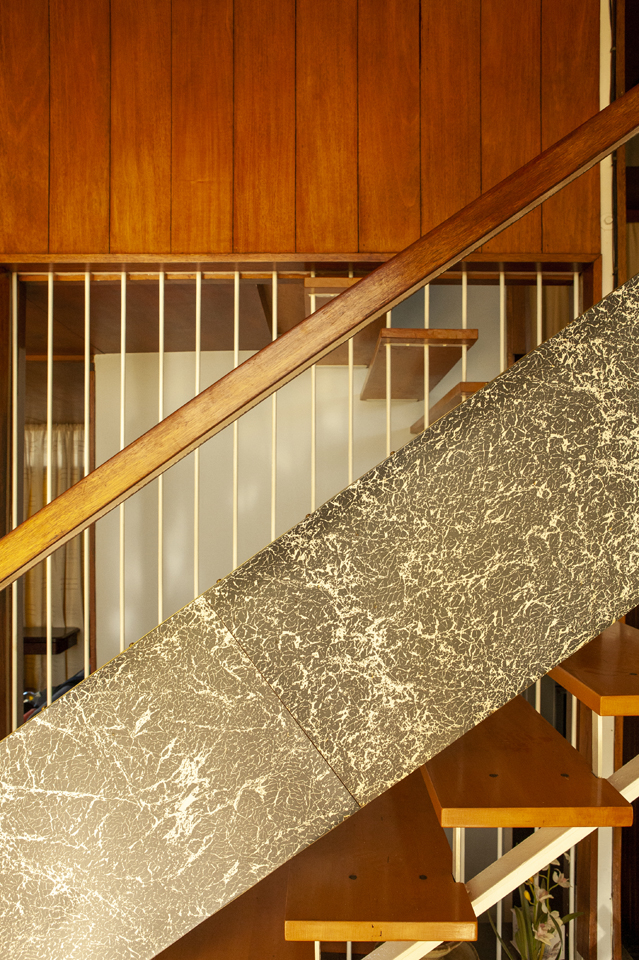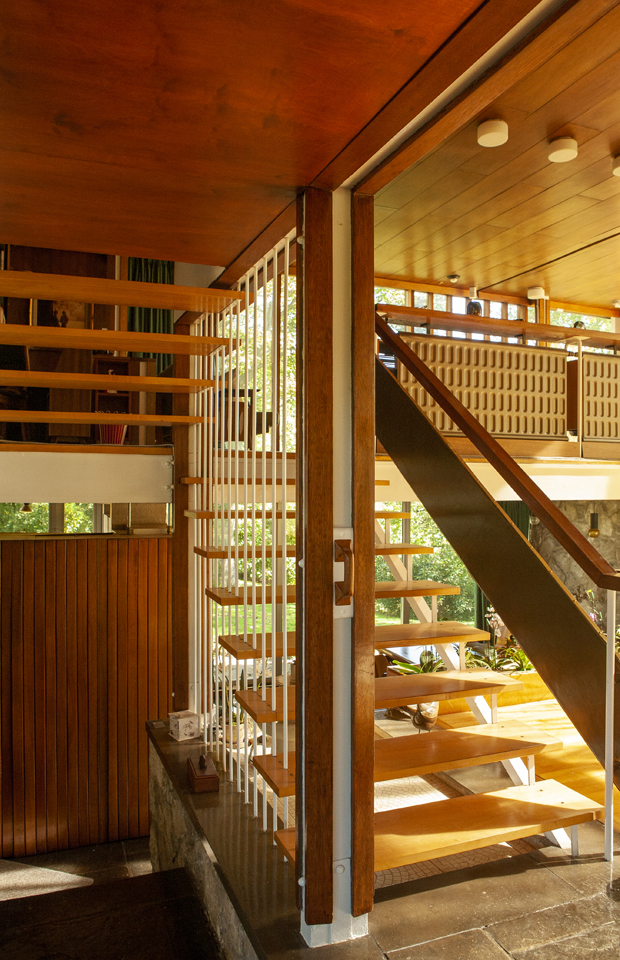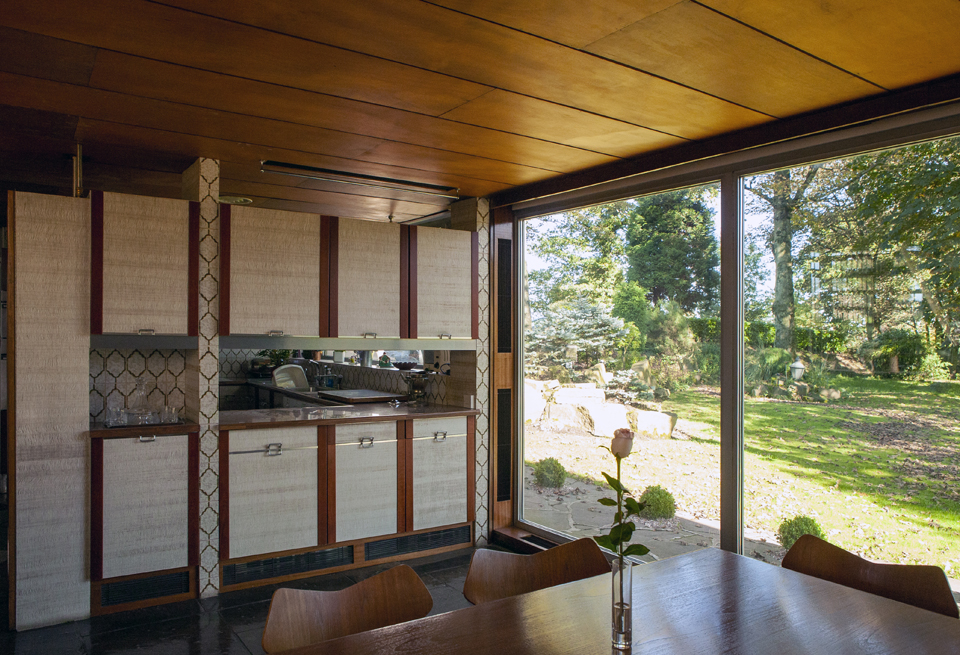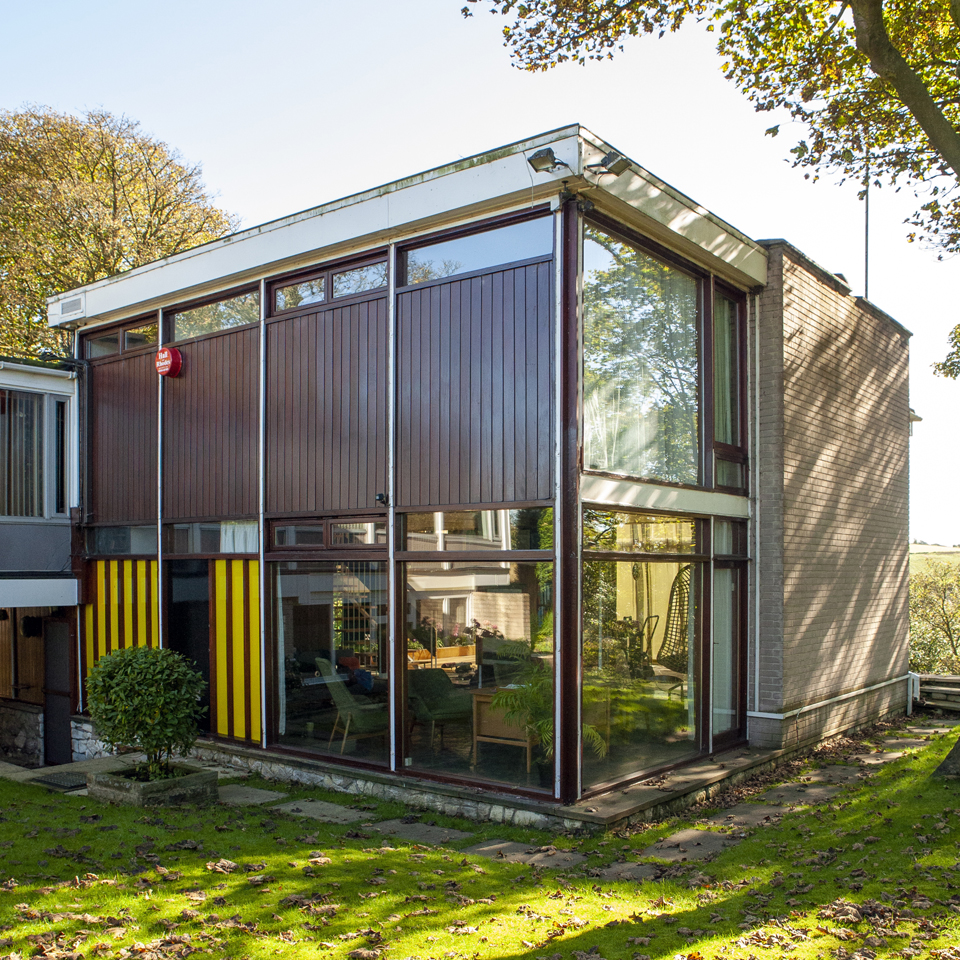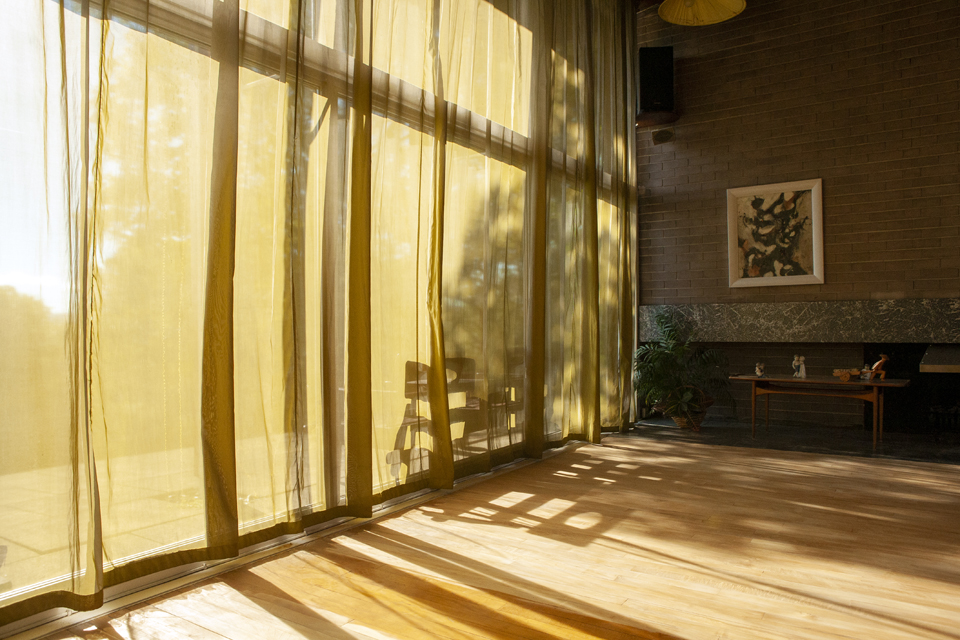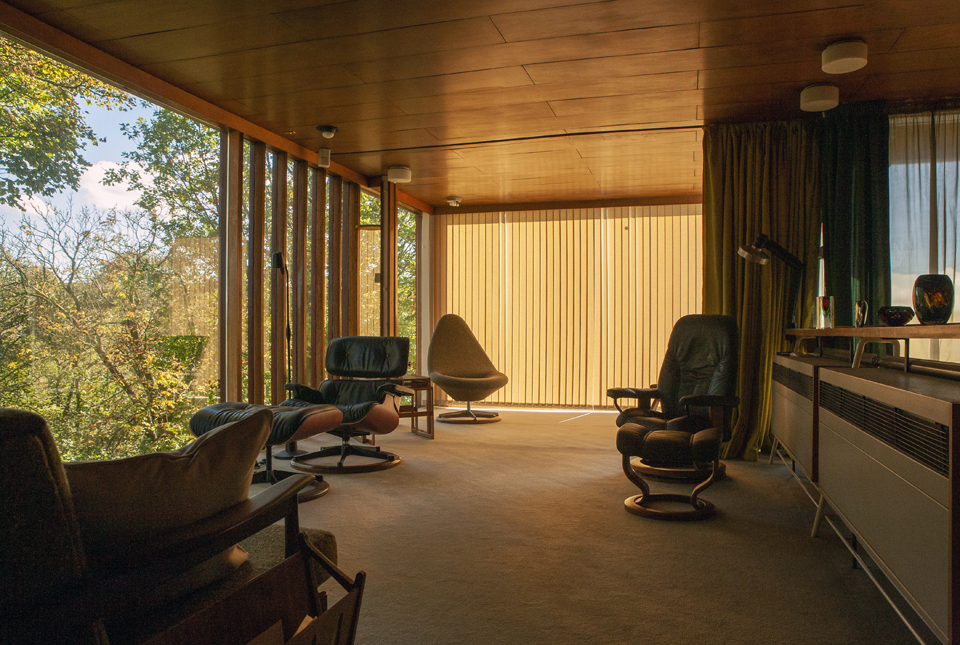Farnley Hey
1955
During his time as a labourer on the South Bank for the Festival of Britain, Womersley recalls how his generation of architects were ‘going to be called upon to recreate this type of twentieth century environment’ [1]. Farnley Hey was his first attempt to do, for his ‘longest suffering client’, his brother. Designed from 1952 onwards and completed in 1954 it is one of the most renowned post-war houses in Britain – a slice of California in rural West Yorkshire, quintessentially contemporary and addressing the critical regionalist debates of the period. The timber frame was accompanied by rough stone walls, brick, glazing and Formica, drawing together traditional and new materials – the colours of the Formica were intended to marry with the surroundings. According to the AJ in 1955, ‘Yorkshire clients are obviously very conservative in their outlook, so Yorkshire is hardly a happy hunting ground for journalists looking for modern architecture’ [2]. No-one had to look far for this house though, it was widely published and respected, featuring in international journals and on BBC television [3]. The house won an RIBA Bronze Medal in 1957 and featured on the front cover of their journal in December the same year. Clever planning makes the house feel bigger than it really is. The main living space was designed to receive the playing of live and recorded music, the gallery of the first floor workroom could host musicians and the hi-fi system was built into the columns separating the living room and study. The majority of the interior finishes were those of the materials themselves, York stone floors and plywood ceilings as well as the aforementioned Formica. The house sits above a valley with commanding views and was built as close to the edge of the slope as gravity would allow, thus setting it back from the main road above. The first floor was extended to Womersley’s original plans and a small infill conservatory added at a later date, much of the house remains intact. I was lucky enough to visit as the house was between owners and a nonchalant handyman allowed me to roam as I wished. Grade II listed in 1998, and recorded as a ‘famous and much-published early example of a freely planned small house in a fine setting’ – arguably something of an understatement [4].
[1] RIBA Journal, May 1969, p.190.
[2] Architects’ Journal, 2 June 1955, p731.
[3] Wickens, M. (2004) The Modern House in Bath. Peter Womersley’s Valley Spring (Bath: Dissertation)
[4] https://historicengland.org.uk/listing/the-list/list-entry/1375671
